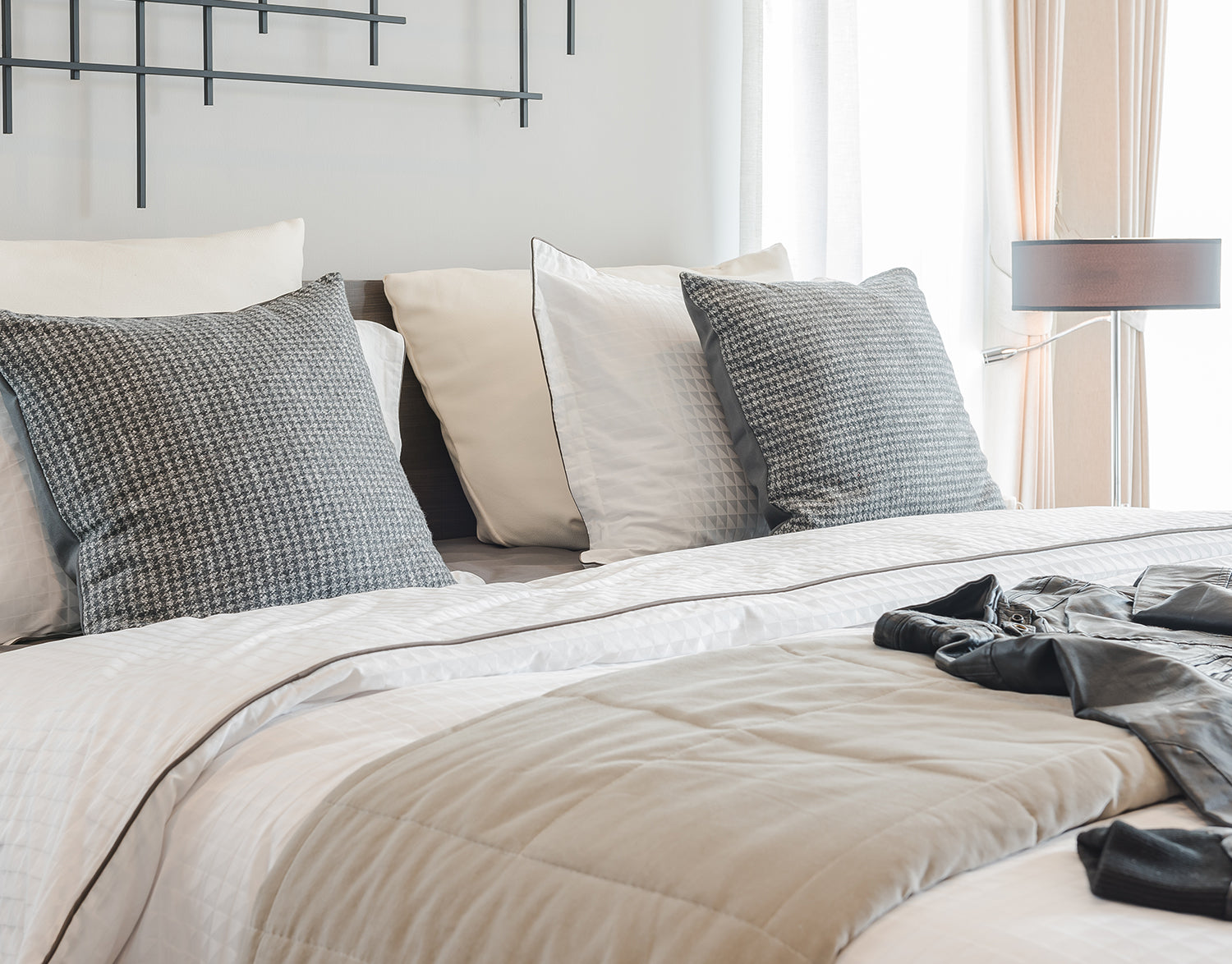Tips for Buying Bed Linens

Being that we spend about one-third of our lives asleep, it makes sense to invest in bedding that's not only comfortable but stands the test of time. But with so many options out there — thread count, fabric make-up, patterns, solids — the decision process can be overwhelming.
Thread Count
Thread count isn't an indication of quality anymore. Unless it's an amazing and very expensive fabric, a high thread count is just a numbers game: many companies cheat the numbers with double twist yarns in a cheaper fabric. "Personally, I prefer a 400 single pick percale sheet because of the crisp, cool feel. But if you like a soft, warm, bed, a great stretchy jersey sheet might be your thing, and that's not about thread count at all," Lemieux says.
2. Material
The type of material you choose for your sheets has everything to do with personal preference. Think about it: it's what you're wearing eight hours a day.
- Cotton: The best quality (and most expensive) is 100% Egyptian, which has extra-long-staple fibers that produce sumptuous, yet extremely durable sheets.
- Pima or Supima cotton: A medium-to-extra-long staple fibers material, is known for its softness and sheen and is a little more affordable than Egyptian cotton.
- Linen: Ideal for hot climates, linen sheets are some of the most expensive out there but will last for decades.For an already worn-in look and feel, "I love all the enzyme-washed linens on the market right now," Lemieux says. "They're soft and durable, and improve with age."
- Poly-blend sheets: Easy and resistant to wrinkles.
3. Weave
The way sheets are woven have a direct impact on how they feel. Lemieux's fave, percale, is lightweight and tightly woven, which results in crisp, cool, bedding, while microfiber's super-tight, dense weave makes it wrinkle-resistant, extra-soft, and resistant to water. Some other weaves to consider: ultra-soft and lustrous sateen, and flannel, with a nappy texture perfect for cooler climates.
4. Pattern
Like any other element in the bedroom, sheets play a part in the overall design. "I always advise a small, medium, and a large-scale mix of patterns in the same color family," Lemieux says. "It's an easy way to start experimenting with prints."
5. Seasonality
How many sheet sets you need is totally up to you and how often you like to change things up. But remember, sheets that may seem summery can work all year. Just add a coverlet, blanket, and throw to make your bed cozier for the fall and winter months.





